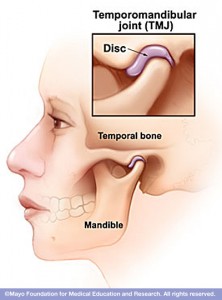TMJ Symptoms – Temporomandibular Joint Disorder and Treatment

Temporomandibular joint (TMJ) disease can be caused by a number of factors. Many people are surprised to learn that temporomandibular joint disease is very common. Most people believe that this only happens to those who have had some type of head injury. The TMJ is the joint that connects the upper and lower jaw.
TMJ symptoms usually last for a day or two and then go away. However, some symptoms can last for years and have other complications, which can include headaches, neck and jaw pain. In fact, over a third of adults experience one or more TMJ symptoms during their lifetime. TMJ symptoms differ depending on which part of the body it affects.
The most common symptom of TMJ is headache. The headache usually gets worse when a person has a severe headache. The headache will be accompanied by pain in the temporomandibular joint. Sometimes the pain is so severe that it causes dizziness or nausea.
If you are concerned that you have a temporomandibular joint disorder, seek medical attention as soon as possible. Symptoms can make you dizzy, which further increases your chance of having a stroke. In addition, a large percentage of people who have had TMJ also have a history of strokes or heart attacks.
There are many different medications that can treat the symptoms of temporomandibular joint disease. Some of these include antihistamines and muscle relaxants. While these medications are effective in treating symptoms, they do not address the underlying problem. This is because they only treat the symptoms, but they do not fix the underlying problem.
Medicines such as St. John's wort and zinc help relieve the symptoms of temporomandibular joint disease. They also help the body balance and heal itself. This, in turn, will reduce the risks of future strokes. Other treatments, such as acupuncture and osteopathy, also help heal joints.
There are many different therapies that can also be used to treat temporomandibular joint disease. One of the most popular is the Swedish massage. It involves massaging the affected areas. For some people, this can be a great way to relieve symptoms. Another popular therapy is exercise.

In addition to medication and therapy, diet, stress and lifestyle can all play a role in the development of temporomandibular joint disease
A good dentist and regular exercise can be effective treatments.
A good dentist can help prevent further damage to the temporomandibular joint. If you notice that your temporomandibular joint is getting stiff, it might be time for a dental checkup. A bad tooth or infection can cause temporomandibular joint stiffness. You should also check your teeth at least twice a year for harmful bacteria or plaque, as this can also damage the temporomandibular joint.
If you have temporomandibular joint disease and make an appointment with your dentist, be sure to ask what they can do for your TMJ problems. Your dentist can help you work with your jaw muscles and bone to strengthen your jaw and reduce your risk of TIA in the future.
Your dentist can also teach you how to strengthen the muscles attached to the TMJ. This will allow your joints to move naturally and not as easily as when they were first brought together. Jaw muscles can be strengthened with exercises and stretching to keep your jaw healthy.
If your dentist knows what medical condition you have, they can advise you on exercises to help strengthen your jaw muscles. It is recommended to use teeth when brushing your teeth. Regular brushing, flossing, and even brushing your tongue can also help keep your teeth healthy. It is also important to avoid cold drinks and foods containing caffeine, as well as smoking.
When you take care of your teeth, you are less likely to develop a TIA on your TMJ. In addition to improving dental health, eating a healthy diet, exercising, and living a healthy lifestyle can help you avoid TIAs. also.
